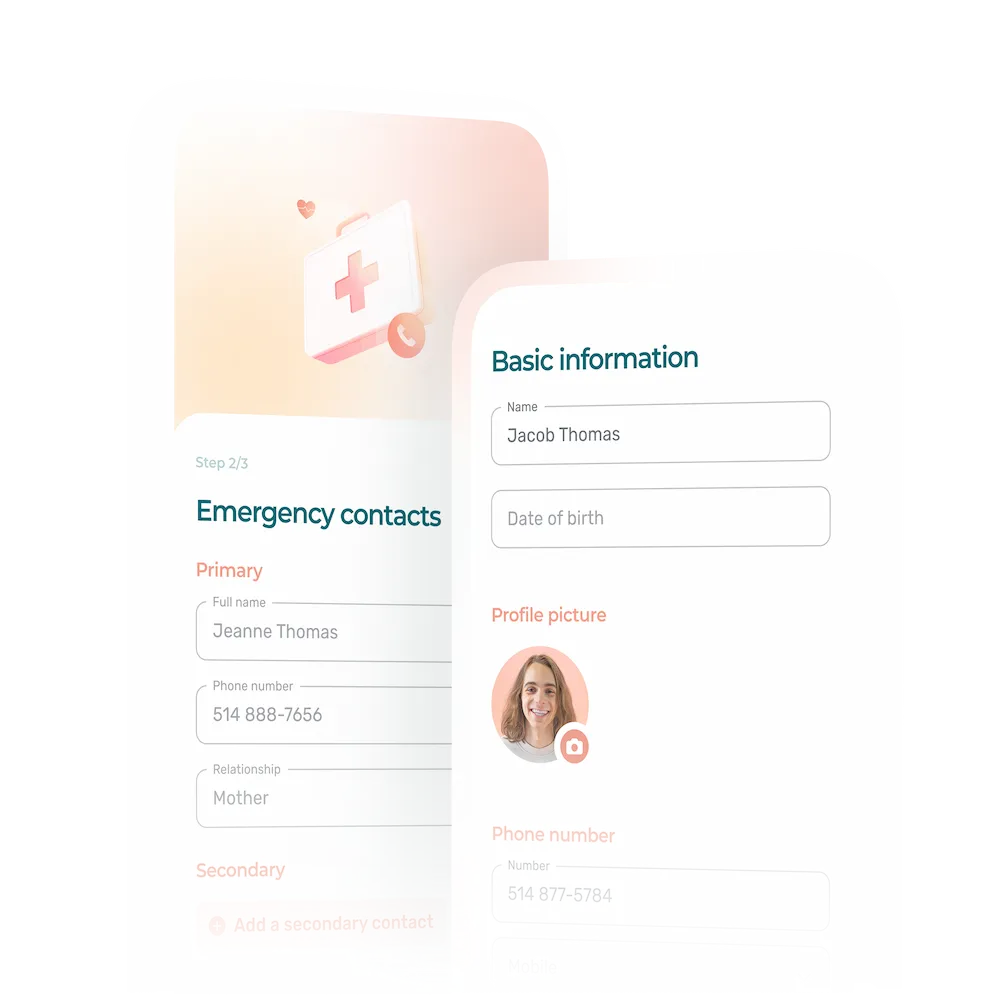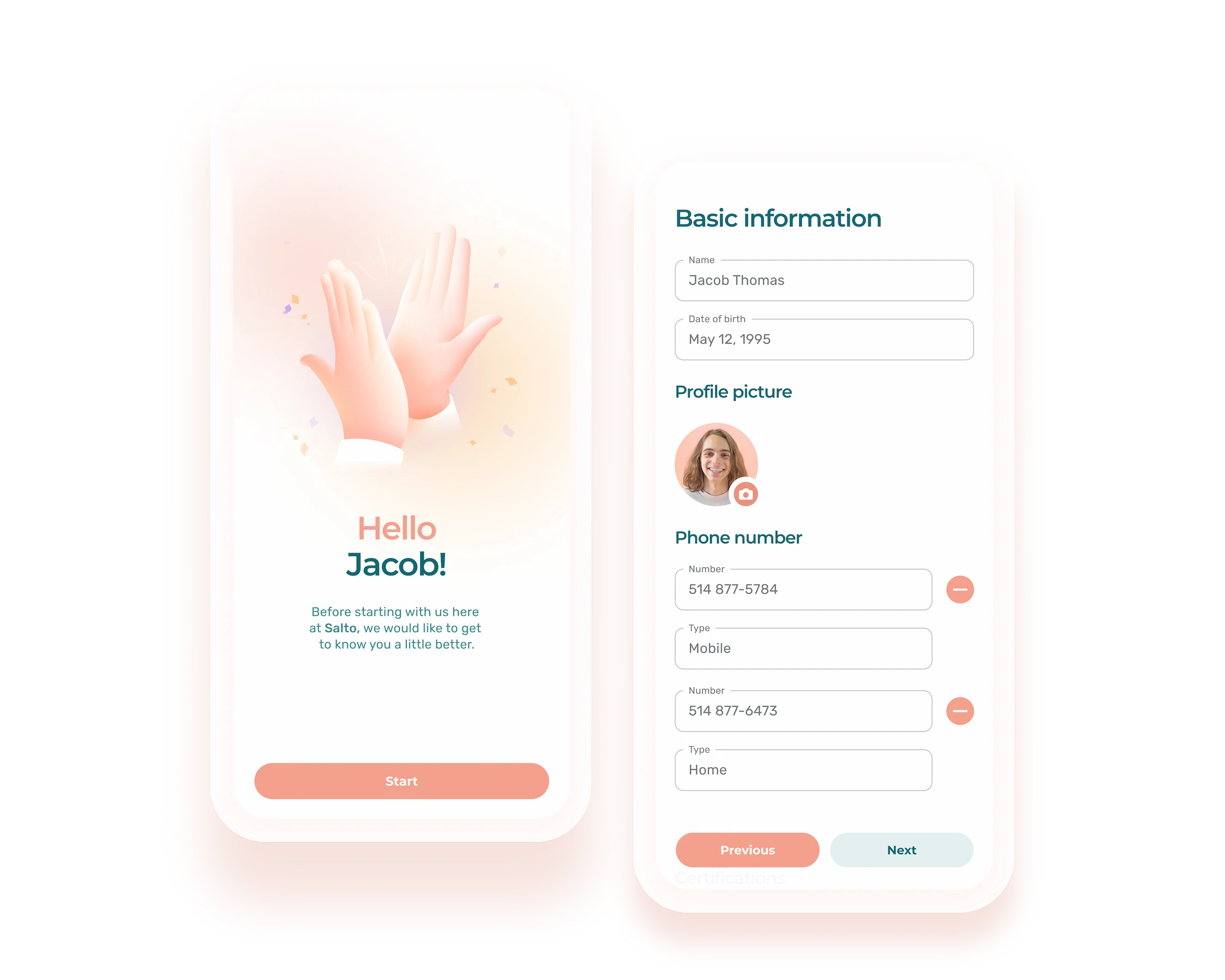A well-crafted recruitment strategy makes the difference between successful hiring… and failure.
A recruitment strategy consists of all the actions, decisions, and means put in place to fill vacancies at a company. It also encompasses strategic planning in order to anticipate the creation of a new position and avoid being short-staffed.
In today’s context of labor shortages, where recruiting is increasingly difficult, it is crucial for companies of all sizes to have effective strategies for their recruitment plans.
What Is a Recruitment Strategy?
A recruitment strategy is a plan of action; its main objective is to find the best candidates for the jobs that need to be filled within a company. It generally includes a description of the sought profile, the job to be filled, and the ways in which this can be achieved.
Companys’ recruitment strategies can vary greatly depending on the industry in which they operate, the economic context, and their short- or long-term objectives. There is no magic bullet, and each organization must work to find the recipe that suits it best.
Why Develop Recruitment Strategies for Your Company?
Having solid, effective recruitment strategies is essential to ensuring the long-term activities of a company, and to building a succession. Companies using a range of recruitment strategies can also see the following benefits:
- Reduced recruitment time
- Increased number of candidates applying for positions
- Improved corporate reputation and brand image
- Reduced recruitment costs
- Improved employee performance and retention
Let’s take a look at the most common ones.
11 Recruitment Strategies to Try
1. Emphasizing Your Company’s Values
Does your company place significant value on the environment, a spirit of fun, or the diversity of its employees? Just say so! People want to work for companies whose values matter to them and tie in with their own values, as this gives meaning to their work. They will be more motivated to apply for positions at companies they admire.
There are so many examples of organizations that do an amazing job promoting their values. A good example in Quebec is the company Poches & Fils, which is renowned for their fun and laugh-out-loud working culture. This is apparent in the description on their “About” page:
Born in a living room
Straight outta the Varennes suburbs, Quebec’s fashion hub, Poches & Fils sewn its first pocket in 2014. In fact, it was Josée who crafted the first pockets in her living room while the boys were playing outside. The burger print pocket created so much buzz that Anthony abandonned his master degree, his home and his motherland.
To cater to the growing demand, he scouted his football teammate Nick. They officially launched Poches & Fils in January 2015, even though they had no web or fashion experience. However, having played for several years, they were quite familiar with the idea of a “pocket”.
The company was then founded with what they had left: effort and determination. Inspired by T. Ferris, they were able to fit “6 weeks of 4 hours” in every work day.
Their tone on social media is light, with jokes and self-deprecating humor. Poches & Fils has very effectively set the stage for any candidate who would like to be part of their team.
Advantages of Promoting Your Company Values
- Create a strong sense of belonging
- Recruit people who share the same values
- Build a strong corporate culture
- Strengthen bonds between employees
2. Showcasing Your Corporate Culture
We all spend so much time at work that people want to feel good there, and rightly so! Individuals want to know more about your corporate culture before applying for a job.
Companies’ culture is what sets them apart from others and draws in talent. It includes company history, values, traditions, workplace, dress code, and more. So don’t hesitate to introduce yourself in your job postings so that people feel like they really know you.
Use social media to spotlight daily life at your organization, and feel free to add some flair to your “About” page.
At Agendrix, for example, we always share our team activities on our Instagram page. We also promote the initiatives of our Care collective, whose mission is to support causes important to Agendrix team members.
And most importantly, we always tailor our job postings so that they reflect our corporate culture.
For Example
Our mission to make management about people first already gives you a good idea of how we think and work!
We are a team of over 35 young, driven, and competent individuals.
Do you have ideas? Share them with us! Have an opinion? We’d like to know it and we like being challenged. Are you the type of person who likes to try new ways of doing things or new tools? Here, initiative is encouraged! In fact, when you arrive at Agendrix, each department manager will take the time to introduce you to what is being done in their team so that you have a better grasp of what is going on at the company as a whole.
I personally will assist you every step of the way so that you learn the ropes at your own pace.
Bottom line, we’re a fun (and growing) gang that enjoys work every day.
Benefits of Shining Through Your Corporate Culture
- Attract more talent
- Stand out from other companies
- Build a strong brand image
- Attract more candidates for each open position
- Speed up the recruitment process
3. Offering Competitive Benefits
Attracting and recruiting employees is not just a matter of offering a good salary or guaranteed hours. According to recent studies, beyond a salary, people are looking for flexibility at work and the ability to better juggle their work and personal lives.
To be able to offer attractive benefits, be open and chat with your employees to better understand their needs. This will help make sure that the work conditions you are offering truly appeal to them. Your current and future employees alike will benefit.
Don’t settle for offering your employees the bare minimum. Going the extra mile is what will set you apart from other employers.
Here are a few ideas in the way of benefits to offer your employees:
- Additional days off
- Flexible schedules
- Attractive discounts on your products or services
- Additional sick leave
- Competitive salaries
- Free snacks
- Efficient work tools
- Paid training
Benefits of Offering Competitive Benefits
- Increase employee retention
- Attract more candidates
- Increase employee well-being
- Build a talent bank
4. Setting Up a Referral Program
A referral program is an easy strategy to establish in any workplace. It simply comes down to encouraging employees to recommend candidates for open positions. If that candidate is hired, the recommender receives a reward, which can be in the form of a gift or bonus.
Having a referral program makes recruitment easier and less expensive. It will also provide you with a pool of candidates who are not necessarily looking for a new job.
This strategy is especially effective for workplaces where recruitment is more of a challenge.
For this strategy to be maximally effective, your employees must first become ambassadors for your company. This way, they will be able to make you look your best to potential candidates.
Benefits of Offering Referral Bonuses
- Motivate employees to give their best
- Ease the recruitment process
- Save on recruitment costs
5. Investing in Employee Satisfaction and Well-being
To make your employees into ambassadors, invest in their well-being and satisfaction.
There are a multitude of benefits to having happy, satisfied employees—from greater productivity and improved customer service to lower employee turnover and so much more.
And if your employees feel good working at your company, they will not hesitate to speak of your organization in glowing terms, whether in terms of your products, services or working conditions. This will make it easier to recruit since they will strengthen your employer brand.
In the long run, making employee satisfaction a priority will foster loyalty, and your retention rates will soar.
Benefits of Investing in Employee Satisfaction and Well-Being
- Improve your employees’ well-being
- Increase company productivity
- Improve customer service
- Ease recruitment
- Increase the number of applications received
6. Having a Well-established Recruitment Process
To be effective, a recruitment strategy must start with a thoughtful recruitment process. Being organized and well-structured will maximize your chances of hiring the right candidate the first time around.
Start by clearly defining your company’s current and (projected) future needs. This will help you determine which positions will need to be filled in the short and medium term.
Next, write up the job description to establish the position’s roles and responsibilities, skills and requirements, candidate profile, etc. Be sure to personalize your job posting so that it reflects your company culture and piques the curiosity of candidates.
Throughout the recruitment process, make sure the experience is pleasant and enjoyable for candidates. Evaluate applications with the help of an objective evaluation grid. Conduct an initial phone interview (roughly 15-20 minutes) with the candidates you are interested in and invite the best ones to an interview. Use recruitment tests as needed.
Benefits of Implementing a Robust Recruitment Process
- Reduce recruitment costs
- Improve candidate experience
- Recruit the right candidate faster
- Better anticipate future needs
7. Optimizing Your Careers Page
A company’s Careers page is often one of the first places candidates will go. If you have a good employer brand, many candidates will even go directly to your website to monitor your vacancies and apply for positions that interest them. So you have a lot to gain by optimizing this page.
Make sure your career page is easy to find, clear and concise. It should be easy for people to navigate. So don’t hesitate to run tests to make sure it’s easy to understand and use.
Also, don’t hesitate to explain your mission, your values and even highlight the benefits you offer to attract candidates. Add an FAQ to answer any questions candidates may have.
Benefits of Optimizing Your Career Page
- Improve company image
- Improve company reputation
- Improve visibility of job offers
8. Using Social Media to Recruit
Recruiting on social media is becoming increasingly effective. And since most adults visit social networks on an almost daily basis, it’s a great place to post your job offers.
Take advantage of the opportunity to showcase your company and the working environment in which candidates will find themselves once hired.
Don’t hesitate to use proven networks such as Facebook, LinkedIn or Instagram, but also dare to use TikTok. The results may surprise you!
Just make sure to respect the criteria of the various platforms to avoid your ad being rejected or deleted.
Advantages of Using Social Media to Recruit
- Improve the visibility of your job offers
- Increase the number of applications
- Speed up your recruitment process
- Diversify your talent pool
9. Hiring Interns
Hiring your interns as soon as they finish their studies is one of the best recruitment strategies you can adopt. They’re already familiar with your company and your way of doing things, so their onboarding is natural and easy.
What’s more, they can bring new ideas and a breath of fresh air into your organization.
Identify the best-performing interns early on, and talk to them about job opportunities after their studies. Don’t hesitate to offer them opportunities for skills development and more responsibility if they show an interest.
Advantages of Hiring Interns
- Facilitate onboarding
- Reduce recruitment costs
- Build a strong corporate culture
10. Better Analyzing the CVs of the Best Candidates
Sometimes, you won’t be able to make a job offer to certain candidates even though their profile and skills are excellent. They may be overqualified for the job, or you may not be able to offer them a salary that meets market standards for their experience.
In this kind of situation, it’s essential to keep in touch with them, so you can get back in touch if an opportunity comes up that’s better aligned with their profile.
You also benefit from analyzing their CVs to identify the key characteristics that make them excellent candidates, so that you can more easily spot these traits on other CVs.
Benefits of Better Analyzing the CVs of Top Candidates
- Build a talent bank
- Speed up your recruitment processes
- Reduce recruitment costs
- Improve your recruitment process
11. Optimizing Job Interviews
Job interviews are a bit like the sales pitch you make to your customers. It’s often the first real contact candidates will have with your organization, so it’s the time to show your best side.
You also need to make sure that their experience is pleasant and makes them want to come and work for you. So take the time to create an interview process that’s interesting, relevant and effective.
For example, always conduct an initial phone call with your candidates to validate their interest and provide more details about the position if necessary. This call should last no more than 15 minutes. If it goes well, invite them for a face-to-face (or video) interview.
The face-to-face interview should take place in a quiet, private environment, in the form of a discussion. Give the candidate a chance to tell you about themselves and their career goals. If you opt for a recruitment test, make sure it’s not too long, so as not to discourage the candidate.
Finally, always follow up after a job interview, even with candidates you haven’t chosen. Who knows, another more suitable position may become available in the coming months. So it’s essential to maintain good terms with them.
Benefits of Optimizing Job Interviews
- Reduce recruitment costs
- Improve candidate experience
- Improve corporate reputation
Recruitment Is a Long-term Endeavor
Of course, all of the strategies presented in this post require time and energy before they begin to pay off. Some of them cannot be implemented without being combined with another strategy.
But when the right recruitment strategies are in place and well established, the benefits will eventually follow. Start crafting your strategies today!
What Are Some Examples of Recruitment Strategies?
Examples of recruitment strategies include:
- Posting a job on social networks and encouraging employees to recommend people to fill the position as quickly as possible
- Participating in job fairs to fill seasonal positions and keeping profiles of people you were unable to hire
- Refining recruitment ads by optimizing job descriptions and highlighting the working conditions offered by the company
What Are the 21 Recruitment Strategies or Methods?
There is a wide range of recruitment strategies, such as:
- Promoting corporate values
- Promoting corporate culture
- Offering competitive advantages
- Setting up an employee referral program
- Investing in employee satisfaction and well-being
- Having a well-established recruitment process
- Optimizing the Careers page
- Using social media to recruit
- Hiring interns
- Better analyzing the CVs of top candidates
- Optimizing job interviews
- Improving job descriptions in job offers
- Implementing diversity and inclusion practices
- Posting job offers on specialized sites
- Using headhunters
- Creating recruitment videos
- Contacting former candidates
- Personalizing recruitment ads
- Using an Applicant Tracking System (ATS)
- Investing in advertising
- Participating in job fairs
What Is an Effective Recruitment Strategy?
Steps to an effective recruitment strategy include:
- Identifying recruitment objectives
- Determining current and future needs
- Identifying performance indicators to monitor
- Determining actions to be taken to achieve objectives
- Presenting the plan internally
- Adjusting the plan as needed, based on performance indicators












